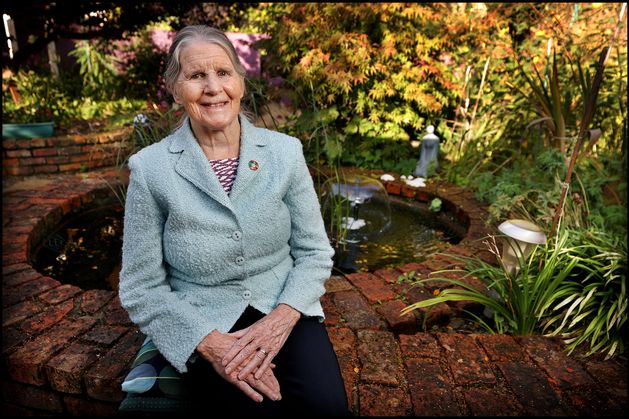October data indicated the weakest improvement in Irish manufacturing conditions for 10 months, figures produced by AIB today showed, with production volumes unchanged in October, while new business growth eased amid subdued export sales.
However, input cost inflation dropped to a 17-month low and Irish manufacturers maintained a positive assessment of the outlook for activity levels over the coming year, the monthly Purchasing Managers Index report from AIB also said.
“October data pointed to only a marginal upturn in manufacturing conditions, with the latest improvement the slowest seen so far in 2025,” the report said. “This reflected a stagnation in production volumes, alongside weaker rates of new order growth and job creation.”
The report found that manufacturers remain upbeat about the year ahead business outlook, although confidence levels slipped to a three-month low. “The latest survey data indicated that inflationary pressures moderated in October, with input costs and prices charged both rising at the slowest rates since May 2024,” it said.
The PMI is an indicator of manufacturing performance derived from indicators for new orders, output, employment, suppliers’ delivery times and stocks of purchases. Any figure greater than 50.0
indicates overall improvement of the sector.
Commenting on the survey results, David McNamara, AIB Chief Economist, said: “The AIB Irish Manufacturing PMI indicated that growth slowed in October, with the index at 50.9, down from 51.8 in September. The modest improvement in manufacturing conditions in October was driven by gains in new orders and employment, while output growth stalled and inventories decreased more quickly.”
“The Irish manufacturing PMI remains above the flash September readings for the Eurozone and UK at 50 and 49.6, respectively, but below the US at 52.2,” he said.
“Output stagnated in October, with respondents citing subdued demand conditions. This was also reflected in the continued fall in export orders, albeit total new orders continued to expand at a marginal pace. Respondents cited weakness in European export markets as the key driver of the fall in export orders. Encouragingly, employment continued to expand, extending the current period of growth to 11 months. However, the pace of growth eased as some firms noted skill shortages holding back hiring. ”
“Elsewhere, the purchases index fell in October, but stayed in expansionary territory, amid resilient output plans,” he said.
“The October survey showed a sharp deceleration in input and output price inflation, linked to lower raw material costs. Output price inflation decelerated to its slowest pace in 17 months, linked to lower input costs and intense competitive pressures.”
And he added: “Irish manufacturers maintained a positive assessment of the outlook for activity levels over the coming year. Around 45% of the respondents predict a rise in output levels during
the year ahead, down slightly from 48% in September, while 9% expect a decline. Manufacturers linked business optimism to hopes of an improvement in the global economy alongside entry to new overseas markets.”
At 50.9 in October, the seasonally adjusted AIB Ireland Manufacturing PMI posted above the neutral 50.0 value for the tenth consecutive month. However, the PMI was down from 51.8 in September and signalled the slowest upturn in overall manufacturing conditions since the current phase of improvement began in January. The decline in the headline index during October reflected weaker contributions from all five PMI sub-components, the AIB report noted.
“October data indicated that production volumes stagnated across the Irish manufacturing sector, which ended a nine-month period of sustained expansion. Survey respondents suggested that there had been little-change in output requirements in September due to sluggish demand conditions and lower backlogs of work.”
“Total new work expanded only marginally in October and the rate of growth eased since the previous survey period. Manufacturers noted intense competition for new business and ongoing
headwinds to order books from lower export sales. The latest reduction in new orders from abroad was the fastest since May, which was mainly linked to fewer sales in European markets.”
“Employment growth was maintained for the eleventh month in a row during October. Despite easing since September, the pace of job creation remained stronger than the long-run survey average,” the report noted.
“Goods producers commented on long-term business expansion plans, although some noted staff shortages and difficulties finding suitably skilled candidates.”
“Manufacturers boosted their purchasing activity in October, albeit only marginally and at a slower pace than in September. This partly reflected cautious inventory management strategies.”
Stocks of purchases decreased for the third month running and at the sharpest rate since May, the report found. Meanwhile, stocks of finished goods continued to fall at a steep pace. Survey respondents often commented on efforts to improve cash flow and improve working capital efficiency.
Suppliers’ delivery times meanwhile lengthened for the sixth consecutive month. The latest deterioration in vendor performance was mainly linked to delays with transportation and logistic
bottlenecks, especially for imported items. However, lower raw material prices contributed to a slowdown in input cost inflation to its weakest for 17 months in October. Average prices charged by
manufacturers also increased at the softest pace since May 2024, despite efforts to pass on higher staff wages and energy bills, the report also said.
Looking ahead, manufacturers are confident that production will increase during the next 12 months. Around 45% of survey respondents foresee an expansion, while only 9% predict a decline.
“That said, the overall degree of optimism was the lowest recorded since July. New product launches and entry into new overseas markets were cited as growth drivers over the year ahead, while
some firms also commented on hopes of a turnaround in sluggish global economic conditions,” the report noted.
The AIB Ireland Manufacturing PMI® is compiled by S&P Global from responses to questionnaires sent to purchasing managers in a panel of around 250 manufacturers. The panel
is stratified by detailed sector and company workforce size, based on contributions to GDP.
Survey responses are collected in the second half of each month and indicate the direction of change compared to the previous month. The headline figure is the Purchasing Managers’ IndexTM (PMI). The PMI is a weighted average of the following five indices: New Orders (30%), Output (25%), Employment (20%), Suppliers’Delivery Times (15%) and Stocks of Purchases (10%). For the PMI calculation the Suppliers’ Delivery Times Index is inverted so that it moves in a comparable direction to the other indices.





